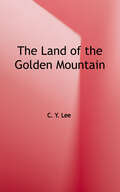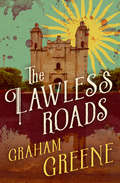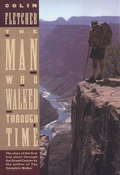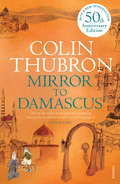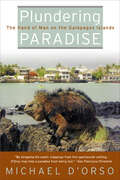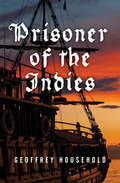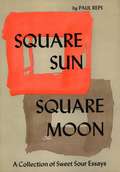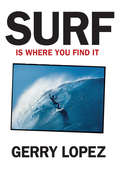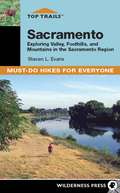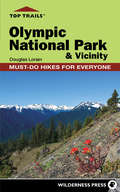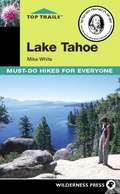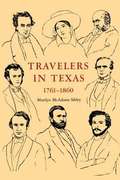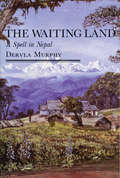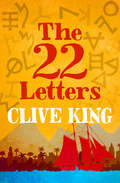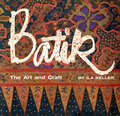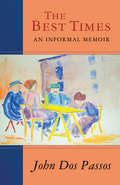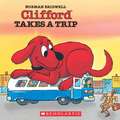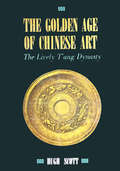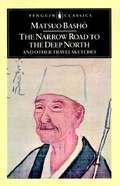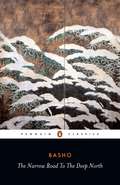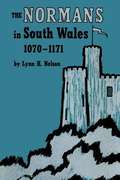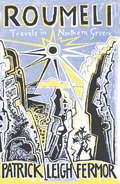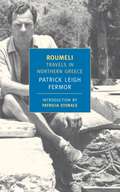- Table View
- List View
The Land of The Golden Mountain
by C. Y. LeeSeeking a better life, losing everything, and yet finding a way to carry on. The trip across the Pacific to land was so strange and yet somewhat familiar. A story of family, loss, determination, friendship, travel, seafaring, and a gold rush. Learning to adjust and hold on to traditions. Disguising yourself to survive and yet yearning to show the world what beauty you possess.
The Lawless Roads: Journey Without Maps And The Lawless Roads (Penguin Twentieth Century Classics)
by Graham GreeneThis eyewitness account of religious and political persecution in 1930s Mexico inspired the British novelist’s “masterpiece,” The Power and the Glory (John Updike). In 1938, Graham Greene, a burgeoning convert to Roman Catholicism, was commissioned to expose the anticlerical purges in Mexico by President Plutarco Elías Calles. Churches had been destroyed, peasants held secret masses in their homes, religious icons were banned, and priests disappeared. Traveling under the growing clouds of fascism, Greene was anxious to see for himself the effect it had on the people—what he found was a combination of despair, resignation, and fierce resilience. Journeying through the rugged and remote terrain of Chiapas and Tabasco, Greene’s emotional, gut response to the landscape, the sights and sounds, the fears, the oppressive heat, and the state of mind under “the fiercest persecution of religion anywhere since the reign of Elizabeth” makes for a vivid and candid account, and stands alone as a “singularly beautiful travel book” (New Statesman). Hailed by William Golding as “the ultimate chronicler of twentieth-century man’s consciousness and anxiety,” Greene would draw on the experiences of The Lawless Roads for one of his greatest novels, The Power and the Glory.
The Man Who Walked Through Time
by Colin FletcherFletcher is the first man ever to walk the entire length of the Grand Canyon. This is the story of his journey, 2 months of struggle against heat and cold, lack of water, dwindling supplies, and almost impassable terrain. But more than a mere adventure story, this is also a spiritual odyssey during which one man began to understand mankind's unique place in the vastness of nature.
The Man Who Walked Through Time
by Colin FletcherThe remarkable classic of nature writing by the first man ever to have walked the entire length of the Grand Canyon.
Mirror To Damascus
by Colin ThubronA 50th anniversary edition of Colin Thubron's celebrated first book, a portrait of Syria's capital city, with a new introduction by the author.Described by the author as simply 'a work of love', Mirror to Damascus provides a rich and fascinating history of Damascus from the Amorites of the Bible to the revolution of 1966, and is also a charming and witty personal record of an extraordinary city. In explaining how modern Damascus is rooted in immemorial layers of culture and tradition, Colin Thubron explores the historical, artistic, social and religious inheritance of its people. Along the way, he shares unforgettable stories about the enterprising travellers of bygone days. Mirror to Damascus is a unique portrait of a city now obscured by recent upheavals, by one of the most indefatigable and popular of travel writers.
Plundering Paradise: The Hand of Man on the Galapagos Islands
by Michael D'OrsoMention the Galápagos Islands to almost anyone, and the first things that spring to mind are iguanas, tortoises, volcanic beaches, and, of course, Charles Darwin. But there are people living there, too -- nearly 20,000 of them. A wild stew of nomads and grifters, dreamers and hermits, wealthy tour operators and desperately poor South American refugees, these inhabitants have brought crime, crowding, poaching, and pollution to the once-idyllic islands. In Plundering Paradise, Michael D'Orso explores the conflicts on land and at sea that now threaten to destroy this fabled "Eden of Evolution."
Prisoner of the Indies
by Geoffrey HouseholdA young English boy stranded on the far side of the ocean must survive Indians and enemies in the perilous New World Miles Philips is but a lad of thirteen when he sets sail aboard the Jesus of Lubeck from Plymouth on the second day of October, 1567. An eager youth willing to learn, he is ready to be of service to Mr. John Hawkins, renowned privateer, adventurer, transporter of African slaves, and general of the fleet of six vessels. But treachery and ambush await them across the ocean in New Spain, and Miles watches in horror as the ship dies bravely in battle at San Juan de Ulua. Forced to make a choice between almost-certain starvation aboard the lone, crippled vessel and taking his chances on land, Miles chooses the latter--setting out on an extraordinary adventure that will test his courage and his wiles as he attempts to find his way back home. Based firmly in history, Geoffrey Household's classic adventure brings a sixteenth-century world of discovery and danger to breathtaking life. A riveting and evocative tale brimming with action and color, Prisoner of the Indies is a magnificent journey back in time that readers of all ages will find impossible to put down.
Square Sun Square Moon: A Collection of Sweet Sour Essays
by Paul RepsThis collection of Zen essays by the author of Zen Flesh, Zen Bones offers an enlightening perspective on a variety of topics.From the introduction:Not all of us can be exuberant travelers though we all dream of faraway places. <P><P>Not all of us can sec the subliminal with a penetrating eye, though many of us yearn to shake off the philistine shells that restrict our lives to the prosaic.Here, then, is your chance! In the privacy of your den, on the commode, in the library wherever you find reading most pleasurable reps invites you t o share his experiences vicariously. Within these pages, if you synchronize properly, you may find yourself in Tahiti where you "breathe this flowered air, drink the cascading water, cat the fruits and just sleep" until "you too become sweet."
Surf Is Where You Find It
by Gerry LopezSurf Is Where You Find It, by Gerry Lopez, is a collection of stories about lessons learned during a lifetime of surfing.
Top Trails: Sacramento
by Steve EvansNear Sacramento, numerous trails access the Central Valley's wildlife-filled wetlands and traverse riverside forests and grasslands. In the Coast Range and Sierra foothills, trails lead to scenic waterfalls, wildflower-studded meadows, and high mountain lakes. Longtime Sacramento resident and intrepid hiker Steve Evans has selected the 43 "must-do" hikes, the majority of which are within two hours of the city. Whether you're looking for a scenic stroll, a full-day adventure, or even a spectacular alpine peak-bagging trip, you'll find it here.Trails range from 1 to 10 miles and sea level to 9000 feet, and each trip includes elevation profiles, detailed maps, driving directions, and "don't get lost" trail milestones.
Top Trails: Olympic National Park and Vicinity
by Doug LorainTop Trails: Olympic National Park is renowned Pacific Northwest outdoor expert Doug Lorain's newest look into the best of the best trails Olympic National Park has to offer. This guide features only the most spectacular scenery and wildlife of a wide selection of routes from all over the peninsula. It includes full descriptions of brand new trails, Mt. Muller Loop and Murhut Falls, as well as introduces readers to some truly outstanding but too-often overlooked hikes, including a wide range of options from short and easy nature trails to extremely demanding day hikes, to a few of the absolute not-to-be-missed options for overnight travelers. In keeping with the tradition of the Top Trails series, Doug Lorain's new guide will maximize readers' time and enjoyment of Olympic National Park.
Top Trails: Lake Tahoe
by Mike WhiteTop Trails Lake Tahoe explores the best trails for hiking and biking in the Tahoe area, including the north side's splendid backcountry, the lake's sedate western side, the picturesque and popular areas south of the lake, including Desolation Wilderness and D. L. Bliss and Emerald Bay state parks and the relatively undeveloped eastern side. Several hikes follow sections of the Tahoe Rim Trail and Pacific Crest Trail. Veteran author Mike White has selected the 50 best trips in the area, ranging in length from a mile-long stroll through a lush, lodgepole-lined meadow to a 19-mile trek on the Tahoe Rim Trail with excellent lake views. The second edition includes six new trails.Winner of the Benjamin Franklin Award for travel guides.
Travelers in Texas: 1761-1860
by Marilyn Mcadams SibleyHistory passed in review along the highways of Texas in the century 1761-1860. This was the century of exploration and settlement for the big new land, and many thousands of people traveled its trails: traders, revolutionaries, missionaries, warriors, government agents, adventurers, refugees, gold seekers, prospective settlers, land speculators, army wives, and filibusters. Their reasons for coming were many and varied, and the travelers viewed the land and its people with a wide variety of reactions. Political and industrial revolution, famine, and depression drove settlers from many of the countries of Europe and many of the states of the United States. Some were displeased with what they found in Texas, but for many it was a haven, a land of renewed hope. So large was the migration of people to Texas that the land that was virtually unoccupied in 1761 numbered its population at 600,000 a century later. Several hundred of these travelers left published accounts of their impressions and adventures. Collectively the accounts tell a panoramic story of the land as its boundaries were drawn and its institutions formed. Spain gave way to Mexico, Mexico to the Republic of Texas, the Republic to statehood in the United States, and statehood in the Union was giving way to statehood in the Confederate states by 1860. The travelers' accounts reflect these changes; but, more important, they tell the story of the receding frontier. In Travelers in Texas, 1761-1860, the author examines the Texas seen by the traveler-writer. Opening with a chapter about travel conditions in general (roads or trails, accommodations, food), she also presents at some length the travelers' impressions of the country and its people. She then proceeds to examine particular aspects of Texas life: the Indians, slavery, immigration, law enforcement, and the individualistic character of the people, all as seen through the eyes of the travelers. The discussion concludes with a "Critical Essay on Sources," containing bibliographic discussions of over two hundred of the more important travel accounts.
The Waiting Land: A Spell in Nepal
by Dervla MurphyThe intrepid traveler's stories from Nepal. Having settled in a village in the Pokhara Valley to work at a Tibetan refugee camp, Dervla Murphy makes her home in a tiny, vermin-infested room over a stall in the bazaar. In diary form, she describes her various journeys by air, by bicycle, and on foot into the remote and mountainous Lantang region on the border of Tibet. Murphy's charm and sensitivity as a writer and traveler reveal not only the vitality of an age-old civilization facing the challenge of Westernization, but the wonder and excitement of her own remarkable adventures. First published in 1967, The Waiting Land was a difficult book for Dervla. As she said herself: "It was a light-hearted account of an experience that had not been light-hearted."
The Waiting Land
by Dervla MurphyDervla Murphy describes her various journeys by air, bicycle, and foot in the remote and mountainous Lantang region near Tibet. Written with charm and sensitivity, this book reveals the vitality of an age-old civilization.
The 22 Letters
by Richard Kennedy Clive KingThree brothers embark on daring journeys in this epic of high adventure that reimagines the origins of monumental discoveries in ancient history. Afraid that Aleph may have taught his sister, Beth, the priestly writing, his father sends him to climb the mountain as punishment. But Aleph couldn't teach Beth the sacred writing even if he tried--there are so many symbols, and he just can't seem to learn them. Instead, he and Beth have invented a new way of writing with only twenty-two letters. But his father won't hear it, and so Aleph must go up the mountain to count the felled trees at the lumber camp. Near the top of the mountain, however, Aleph discovers that all is not as it should be: The camp is empty! Curious, he sets off to find the loggers, never suspecting that the writing game he played with his sister will become invaluable, nor that his search will take him much farther than the mountaintop. Meanwhile, Aleph's two older brothers are on journeys of their own. Zayin, the eldest and a general in their city-state Gebal's small army, is on a quest to find monsters in the Valley of the Centaurs. Nun, the second son, aims for the sea and the Court of Minos. Then, grave news sends all three brothers hurrying home to protect their small city. But something even more disastrous looms on the horizon . . . From beloved children's author Clive King (Stig of the Dump), The 22 Letters is an epic tale of three great advances in history, told through the adventures of four young siblings.
Batik: The Art and Craft
by Ila KellerHere in this volume the author has not only given a comprehensive and fascinating account of the origins and history of batik, with examples of techniques and design, but also includes a complete "How-To-Do-It" section on modern methods of creating batik. The text is lucid and easy to follow, and the simple step-by-step format will enable the art enthusiast to investigate this rewarding and creative medium. Sample batiks by modern artists, show what can be done with craft, skill, and imagination. The author takes the reader through all aspects of making a batik, from a simple dipping, or tie-dying, to sectional dyeing, and the more intricate five or six-color patterns. Basic materials, fabric mixtures, wax temperatures etc. are discussed fully, and more important, the practical problems often encountered by a beginner are thoughtfully explained. Here is a book of batik literally giving you the 'tricks of the trade'.
The Best Times: An Informal Memoir
by John Dos PassosA record of his childhood, young adulthood, and twenties, The Best Times is a collage of cherished memories. He reflects on the joys of an itinerant life enriched by new and diverse friendships, customs, cultures, and cuisines. Luminary personalities and landscapes abound in the 1920s literary world Dos Passos loved. F. Scott Fitzgerald, Ernest Hemingway, E.E. Cummings, Gerald and Sara Murphy, Horsley Gantt--they are his beloved friends. Spain, the French Riviera, Paris, Persia, the Caucasus--they are his beloved footpaths.
The Golden Age of Chinese Art
by Hugh ScottFor almost three hundred years the noble T'ang Dynasty fostered a period of artistic and intellectual endeavor which has never been equaled in the history of China. Sculpture, ceramics, glass, and textiles were some of the major artifacts that emerged from this glorious renaissance of Chinese taste and skill.This book is the story of the T'ang told through objects in the author's collection, one of the most representative in private hands. It includes a marvelous array of gold and silver mirrors, jade, jewelry and gilt bronzes.the 124 illustrations, 24 in full color are accompanied by a history of the T'ang era, and a chapter on each of the categories in the collection gives a comprehensive background to the illustrations.
The Narrow Road to the Deep North and Other Travel Sketches
by Matsuo Bash Nobuyuki YuasaMatsuo Bash(1644 - 1694), later known as Matsuo Chemon Munefusa,was the most famous poet of the Edo period in Japan. In his haiku poems, Basho described the natural world with great simplicity and delicacy of feeling.
The Narrow Road to the Deep North and Other Travel Sketches
by Matsuo Basho'It was with aweThat I beheldFresh leaves, green leaves,Bright in the sun'When the Japanese haiku master Basho composed The Narrow Road to the Deep North, he was an ardent student of Zen Buddhism, setting off on a series of travels designed to strip away the trappings of the material world and bring spiritual enlightenment. He writes of the seasons changing, the smell of the rain, the brightness of the moon and the beauty of the waterfall, through which he sensed the mysteries of the universe. These writings not only chronicle Basho's travels, but they also capture his vision of eternity in the transient world around him.Translated with an Introduction by Nobuyuki Yuasa
The Normans in South Wales, 1070-1171
by Lynn H. NelsonA frontier has been called "an area inviting entrance. " For the Norman invaders of England the Welsh peninsula was such an area. Fertile forested lowlands invited agricultural occupation; a fierce but primitive and disunited native population was scarcely a formidable deterrent. In The Normans in South Wales, Lynn H. Nelson provides a comprehensive history of the century during which the Normans accomplished this occupation. Skillfully he combines facts and statistics gleaned from a variety of original sources--The Anglo-Saxon Chronicle, the Domesday Book, Church records, charters of the kings and of the marcher lords, and more imaginative literary sources such as the chanson de geste and the frontier epic--to give a vivid picture of a century of strife. He describes the fluctuating conflict between Norman invaders in the lowlands and Welsh tribesmen in the highlands; the hard struggle of medieval frontiersmen to take from the new land a profit commensurate with their labors; the development of a Cambro-Norman society distinct and quite different from the Anglo-Norman culture which engendered it; and the attempt of the frontiersman to prevent the Anglo-Norman authorities from taking control of the lands he had won. The turbulent Welsh tribes provided an ever present harassment along the frontier, and Nelson begins his presentation with an account of the failure of the Saxons to control them. He examines the methods adopted by William the Conqueror to cope with the problem--the creation of the great marcher lordships and the subsequent problems in controlling these lordships--and the weakness of some Anglo-Norman kings and the strength of others. By 1171 the conquest of the Welsh frontier was complete; but as Nelson points out, this conquest was strangely limited. The frontier, which extended throughout the lowlands of Wales, stopped at the 600-foot contour line in the mountains. In his final chapter Nelson speculates upon the curious fact that large areas of seemingly inviting moorlands lying above this line remained closed to the Cambro-Norman, and his speculations lead him to some interesting inferences about the nature of the frontier's influence upon the civilization which moves in to occupy it.
Roumeli
by Patrick Leigh FermorPatrick Leigh Fermor's Mani compellingly revealed a hidden world of Southern Greece and its past. Its northern counterpart takes the reader among Sarakatsan shepherds, the monasteries of Meteora and the villages of Krakora, among itinerant pedlars and beggars, and even tracks down at Missolonghi a pair of Byron's slippers.Roumeli is not on modern maps: it is the ancient name for the lands from the Bosphorus to the Adriatic and from Macedonia to the Gulf of Corinth. But it is the perfect, evocative name for the Greece that Fermor captures in writing that carries throughout his trademark vividness of description. But what is more, the pictures of people, traditions and landscapes that he creates on the page are imbued with an intimate understanding of Greece and its history.
Roumeli
by Patrick Leigh Fermor Patricia StoraceRoumeli is not to be found on present-day maps. It is the name once given to northern Greece--stretching from the Bosporus to the Adriatic and from Macedonia to the Gulf of Corinth, a name that evokes a world where the present is inseparably bound up with the past. Roumeli describes Patrick Leigh Fermor's wanderings in and around this mysterious and yet very real region. He takes us with him among Sarakatsan shepherds, to the monasteries of Meteora and the villages of Krakora, and on a mission to track down a pair of Byron's slippers at Missolonghi. As he does, he brings to light the inherent conflicts of the Greek inheritance--the tenuous links to the classical and Byzantine heritage, the legacy of Ottoman domination--along with an underlying, even older world, traces of which Leigh Fermor finds in the hills and mountains and along stretches of barely explored coast.Roumeli is a companion volume to Patrick Leigh Fermor's famous Mani: Travels in the Southern Peloponnese.
